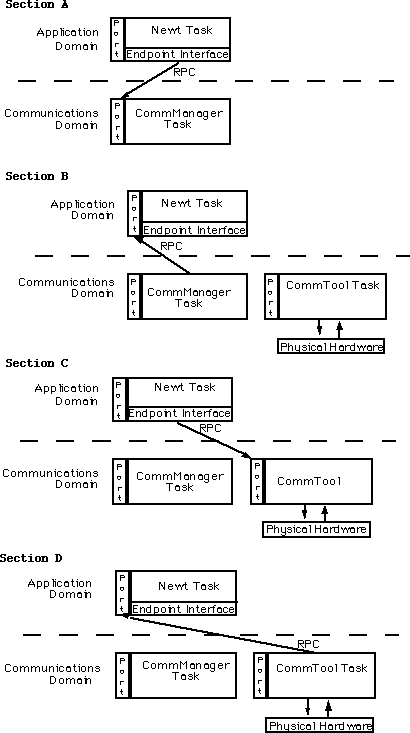
http://www.newton-inc.com/dev/techinfo/qa/qa.htmInstantiate, Bind or Connect touch the hardware?{
type: 'service,
label: kCMSAsyncSerial,
opCode: opSetRequired
}
<see diagram section A>Bind request the CommTool acquires access to any physical hardware it controls, such as powering up the device. The endpoint is ready-to-go.<see diagram section B><see diagram section C><see diagram section D>Disconnect functions similarly to Connect, moving the endpoint into a disconnected state. Unbind releases any hardware controlled by the CommTool. Dispose deallocates the CommTool task.